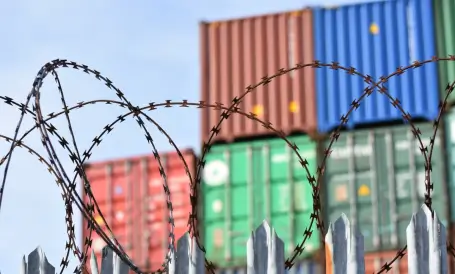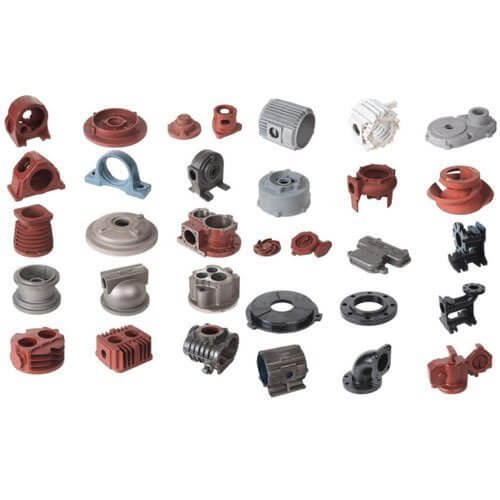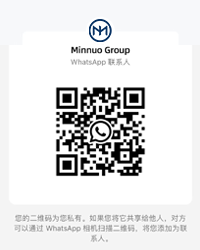In 2025, choosing the wrong brand of farm machinery isn’t just a matter of spending more money, but can affect the stability of an entire farming season.In the past, choosing a tractor usually depended on a few basic factors: horsepower, price and reputation. But by 2025, this logic will no longer apply. As the trade friction between China and the U.S. intensifies repeatedly, the global agricultural machinery supply chain is facing more and more uncontrollable factors: tariff increases, delayed spare parts, longer maintenance cycles, and shrinking after-sales service. …… These factors are profoundly changing our judgment criteria for the “stability” of agricultural machinery brands. These factors are profoundly changing our judgment standard on the “stability” of farm machinery brands.
In this context, more and more farmers began to reflect: “Should I continue to buy familiar brands from the United States and Europe, or should I try local cost-effective, stable supply of domestic brands? “I’m not technically savvy, but I don’t want to make the mistake of choosing a piece of equipment that can’t be repaired once it breaks down!” “Will I be able to get spare parts when I need them?” “Will this machine run reliably for the next 3-5 years?” “What if my tractor breaks down during harvest season?” In short, buying the wrong brand today could cost you the entire season.
This article will take a look at the supply chain logic behind farm machinery brands, with practical advice to help you determine which brand “isn’t afraid to raise prices, keep parts on hand, and provide faster service,” pick a trusted farm partner in the midst of turmoil, and choose a brand that offers not only performance, but resilience, maintainability, and value as well.
Contents
- 1 I. Current context: the twin challenges of tariffs and supply chains continue to intensify
- 2 Ⅱ.Five Key Factors to Evaluate Tractor Brands Under Risk
- 3 Ⅲ.Brand Recommendation Comparison–Chinese Brands vs. Western Brands
- 4 Ⅳ.Purchasing practical advice: this is a solid choice!
- 5 Ⅴ.What Global Farmers Are Saying About Chinese Brands
- 6 Conclusion
I. Current context: the twin challenges of tariffs and supply chains continue to intensify
1. The “chain reaction” behind the tariffs
Since the end of 2023, the tariff game between China and the United States has gradually escalated, with the United States imposing punitive tariffs of 25% or even higher on Chinese agricultural machinery parts (e.g., hydraulic cylinders, electronic control modules, and fuel systems), and China imposing countervailing tariffs on the entire machinery made in the United States.
This policy tug-of-war has resulted in not only expensive equipment, but also a broken supply chain of parts and slow after-sales service, with users actually experiencing problems such as:
“Imported equipment broke an electronic module and waited for parts for 1 month.”
“Promotional purchase of foreign brand tractors, the result is no local after-sales service, the light consignment to the city spent several thousand dollars.”
“A machine repair is more expensive than buying a new domestic one.”
To make matters worse, imported machines often rely on globally sourced parts:
| Component | Typical Origin | Supply Risk |
| ECU & Control Systems | Japan / Germany | High |
| Hydraulic Assemblies | Italy / U.S. | High |
| Bearings, Valves | China | Affected by policy shifts |
When one link breaks, the entire machine suffers.
Case Examples of Real Farmer Challenges
A wheat farmer in Ukraine waited 45 days for an imported hydraulic pump due to customs delays.
A fruit grower in Brazil was quoted $1,200 for a smart navigation sensor from a U.S. brand—excluding installation.
A cooperative in Vietnam had to rent backup machines due to ECU failure on two imported tractors during harvest.
These are not isolated incidents—they are the new normal in a fragmented global market.

2. The global supply chain is “fragmenting”
The global manufacturing base is gradually transitioning from an integrated model to a localized supply chain, but European and American brands brands are still highly dependent on multinational parts and components combinations:
Electronic control system: Japanese / German original
Hydraulic assembly: Italian / American
Transmission components: Chinese OEM
This means that any problem in the ‘chain’ can “paralyze” the whole machine. This means that which part of the “chain” problem, the whole machine may be “paralyzed”. And Chinese brands in recent years in the core components of independent continuous investment, has a complete replacement capacity, greatly reducing the “risk of chain breakage”.
Ⅱ.Five Key Factors to Evaluate Tractor Brands Under Risk
To help you choose confidently, here are the five most important factors to evaluate when selecting a tractor brand in 2025:
1. Spare Parts Availability
Ask yourself: where are the parts for this unit when something goes wrong? How long will it take to deliver? Is it expensive?
Preferred strategy:
See whether the brand has a local warehouse center
Whether to support online + offline dual-channel supply of parts
Parts with a high rate of generality of the brand is more worthy of selection (such as MINNUO, Leiwo)
Question to ask: Can you access spare parts locally, quickly, and affordably?
Chinese brands like MINNUO, Lovol, and Dongfanghong now maintain:
Regional spare parts warehouses in Asia, Africa, and Latin America
High use of standardized, interchangeable components
Online ordering systems for farmers and distributors
Why it matters:
A tractor is only as reliable as the parts you can replace. If your machine stops, your whole farm stops.

2. After-Sales Service Coverage
The service network determines the equipment’s “risk resistance”
Judgment method:
Is there an exclusive service team/authorized repair station?
Does it provide regular inspection + emergency response mechanism?
Does it promise service response within 48 hours?
Question to ask: Who will fix your machine—and how soon?
A reliable service network is critical. Ask these:
Does the brand have a certified service partner in your region?
Do they offer guaranteed service response times (e.g., within 48 hours)?
Are their technicians trained to handle software and hardware issues?
MINNUO, for example, offers:
800+ certified technicians in China
Overseas support teams in 12+ countries
On-site diagnostics with mobile apps
European and American brands in the first-tier cities service capacity is still strong, but in the counties, towns and remote areas of the responsiveness is weakening year by year; while Chinese brands tend to service outlets sinking capacity is stronger, the response is more timely.
3. Localized Component Integration
Imported brands in the electronic control, navigation, power system often rely on foreign technology, once the supply is cut off, the price of parts skyrocketed.
Preferred strategy:
Check whether the equipment uses domestic CVT, hydraulic system, electronic control module
Whether to support the “module replacement” instead of sending the whole machine for repair
Whether to provide “accessories compatibility instructions”.
Question to ask: How many critical components are domestically sourced?
Brands with high local integration can:
Bypass global logistics disruptions
Reduce costs on replacement parts
Maintain supply even during political disputes
In contrast, a tractor built with 70% imported subsystems becomes a ticking time bomb during trade wars.
4. Multi-Crop and Multi-Terrain Flexibility
On small and medium-sized farms, irregular plots, diverse crops and complex roads require great versatility and flexibility.
Recommended metrics:
Does the tractor support quick hookup of multiple implements
Does it support complex operating environments such as orchards, small plots, hilly terrain, etc.
Does it offer customized attachment options
Question to ask: Can this tractor adapt to my diverse farm needs?
For small and mid-sized farms, one machine often handles many jobs:
Tilling
Seeding
Fertilizing
Spraying
Transport
Chinese tractor brands now offer:
Multi-speed PTOs
Universal 3-point linkages
Wide tire/rubber track options
Flexible implement compatibility
This flexibility ensures higher machine utilization—and faster ROI.
In recent years, Chinese brands have invested heavily in “multi-functional integrated platforms”, which are more suitable for actual operating conditions.
5. Long-Term Brand Commitment
Don’t just look at the short-term price activities, but to see whether the brand will continue to serve you in the next 3~5 years.
Judging method:
Does it have its own factory and R&D center?
Does it have overseas export experience? Does it establish an international after-sales network?
Does it clearly provide more than 5 years of technical support cycle?
Question to ask: Will this brand still be there when you need help 3–5 years from now?
Signs of a reliable brand:
Strong investment in R&D and factory production
History of exporting and maintaining products globally
Clear spare parts roadmap and 5+ year support guarantee
Pro Tip: Avoid unknown brands offering deep discounts without proven service or part guarantees.
The more localized the brand and the more vertical the manufacturing chain, the stronger its control over service capability, price controllability, and stable supply.
Ⅲ.Brand Recommendation Comparison–Chinese Brands vs. Western Brands
Here’s a snapshot comparison between typical Chinese brands (e.g., MINNUO) and Western brands (e.g., John Deere, New Holland):
Comparison table of brand performance (in terms of representative brands from China and the US):
| Assessment Dimension | MINNUO (Chinese brand) | Western Brands (U.S./EU) |
| Tariff Exposure | Low | High (10–25%) |
| Parts Availability | 85% localized | Global supply-dependent |
| After-Sales Support | 48h on average | Often outsourced or delayed |
| Smart Technology | RTK, Auto-steering, Cloud diagnostics | Advanced but expensive |
| Terrain Adaptability | High (orchards, hills, small fields) | Medium to High |
| TCO (3-year) | Lower | Higher due to service and parts |
| ROI Period | 2–3 years | 4–5 years |
| After-sales coverage | 800+ outlets nationwide, county-level response | Mainly concentrated in first-tier cities |
| Accessory response speed | Delivery within 72 hours 85% or more | Accessory waiting time 7~21 days |
| Service language support | Multi-language (incl. overseas offices) | English-dominated, dependence on dealers |
| Modules Compatibility | High versatility, full adaptation of farm implements | Proprietary attachments, high replacement costs |
| Total cost of ownership (3 years) | Lower | Higher due to service and parts |
Ⅳ.Purchasing practical advice: this is a solid choice!
Not all tractors are suitable for all farm types. Here are the choices based on your farm:
Farm Type × Recommended Strategy
| Farm Type | Horsepower | Recommended Features | Why |
| <100 acres (orchards, veg) | 60–90 HP | Narrow frame, easy turning, light weight | For tight spaces and frequent turning |
| 100–500 acres (row crops) | 90–150 HP | Multi-tool compatible, RTK ready | Suits multiple seasonal tasks |
| >500 acres (grain fields) | 160 HP+ | CVT transmission, auto-drive | For continuous high-load operations |
| Hilly / Wet terrain | 50–90 HP crawler or 4WD | Anti-rollover, high grip | For steep slopes or soft fields |
At the same time, it is recommended to equip Chinese-made rotary tillers, integrated seeding and fertilizer machines, self-propelled sprayers and other standard agricultural implements, so as to realize a “one-machine-multi-functional” combination of the operation chain.
Ⅴ.What Global Farmers Are Saying About Chinese Brands
“We switched from a European brand to MINNUO. No regrets. Parts are easy to get, and the machine runs every day.”
— Joseph Mwangi, Kenya
“In Vietnam’s rice fields, we need lightweight and fuel-efficient tractors. Our Chinese tractor has outperformed expectations.”
— Nguyen Van Tuan, Vietnam
“In Kazakhstan, winter hits -25°C. The MINNUO still starts, even in the snow.”
— Alikhan B., Kazakhstan
“The local service team in Bulgaria speaks our language and knows the terrain. That’s why we chose Chinese.”
— Ivan D., Bulgaria
Conclusion
In an uncertain world, choosing the right tractor is no longer just about “who’s famous” – it’s about who delivers parts on time, who provides real-time support, and who stands by you when your machine breaks down. It’s not just about comparing prices and configurations, it’s about who is more stable, more reliable and serves you better.
MINNUO, as a Chinese brand of agricultural machinery with independent production + national service + overseas support, is the brand representative that helps farmers realize “affordable, long-lasting and fast repair” under the background of global turbulence. If you are hesitant to choose which brand, whether to import or not, whether the equipment is reliable, we can provide one-on-one procurement advice, intelligent selection model, the whole chain of operation and maintenance programs.
Choose the right brand, not only to buy equipment, but also for your agricultural investment “buy certainty”.

